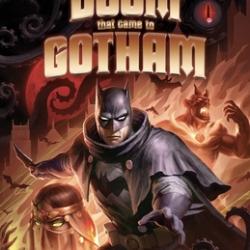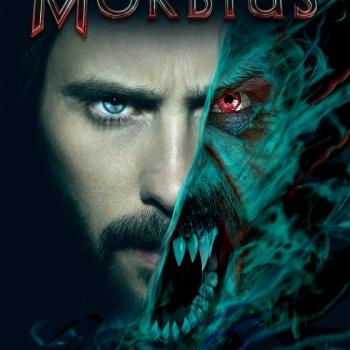Review of To the Wonder, Directed by Terrence Malick
Terrence Malick, the reclusive filmmaker of Badlands, Days of Heaven, and The Thin Red Line, has turned to more explicit religious themes in his most recent films. The Tree of Life, Malick’s 2011 epic, included a long creation sequence and a mystical moment of reunion with deceased loved ones as the film’s protagonist walked along a shoreline. Tree also further developed Malick’s use of voiceover—whispered prayers and inner musings set to lush visuals and potent musical scores—that the director has used throughout his career, taking the technique to a new level with his 2005 film The New World.

Malick is tight-lipped about the inspiration behind his films, so viewers are left to grapple with the ways in which his stories might be autobiographical. Now he’s made To the Wonder, a film about marriage and loneliness, and speculation about how the story matches Malick’s own marital past has heated up once more. But more interesting than questions about the story’s possible roots are expressions of the filmmaker’s current religious impulse. What does To the Wonder tell us about God and Malick’s views of the divine?
The film is, like portions of The Tree of Life and The Thin Red Line, a cascade of words and images (shot by Emmanuel Lubezki, who has photographed Malick’s previous two features). But unlike those films, it has no core story to anchor its more esoteric moments. Without much to latch on to and with so little narrative development, the film grows tedious despite the constantly moving camera and provocative ideas about the meaning of marriage and the place of commitment—to a spouse or to God. It leaves those of us who have defended Malick against critics of his elliptical approach to narrative in the uncomfortable position of conceding his critics’ point this time.
The film begins with Neil (Ben Affleck) and Marina (Olga Kurylenko) as they happily explore Paris, and we hear a voiceover suggesting that the couple is a single unit. “Love made us one,” a character says. “Two. One. I in you. You in me.”
If such talk strikes you as ponderous, the film will prove a long haul: There’s much more of that to come. But the film’s language also has echoes of Scripture, and while it’s hard to say for sure that these allusions are intentional, the terminology is too resonant with Scriptural ideas for the connection to be easily dismissed. The line quoted above has parallels to Mark 10, where Jesus says, “But at the beginning of creation God made them male and female. For this reason a man will leave his father and mother and be united to his wife, and the two will become one flesh.” (vv. 6-8)
The context of that passage has Jesus responding to a Pharisaical question about the lawfulness of divorce—another subject that looms large in To the Wonder. Marina is divorced, with a 10-year-old daughter, which proves an impediment to her future with Neil after priests claim she’s still technically married to her first husband. In America, her relationship with Neil cools, and, when her visa expires, Neil doesn’t ask Marina to stay with him. She returns to France with her daughter.
To the Wonder includes another character, Father Quintana, played by Javier Bardem, and among the first words we hear from him are a recitation of Ephesians 5: “The husband is to love his wife as Christ loved the church.”
Father Quintana is also struggling. Like Marina, he’s a foreigner in America, but the love he wrestles with is not human and temporal; it’s eternal and divine. “How long will you hide yourself?” we hear him ask of God. A parishioner, recognizing Quintana’s inner turmoil, prays that the glum priest will “receive the gift of joy.” A church janitor demonstrates how the joy of God manifests in his own life.
Jane, a pivotal character, casts a large shadow over the story. However, her relationship with Neil is fleeting. While Neil’s thoughts are drawn to Marina, Jane is lost in the memories of a deceased child. She remembers how, after the tragedy, her father advised her to read Romans. “All things work together for good,” she recalls. “He believed that.”
We see Jane reading what appears to be a Bible, but soon she’s gone. Marina, unable to find work overseas, returns to America and is able to marry Neil, but not in a church wedding. Her happiness again cools in America, leading to a betrayal and a request for forgiveness that’s not well received.
Father Quintana seeks another form of spiritual healing, pouring himself into ministry by serving the sick and needy all around him. “Fill our souls with your spirit and life so completely that we may only be a reflection of you,” Quintana prays. “Show us how to see you. We were made to see you.”
To the Wonder is a bold attempt to show us God in different ways—through struggle and through blessing, with beautiful imagery accompanying spoken pleas to God. But for every character soliloquy that connects inwardly, there’s a muttered line that’s more likely to lead to eye-rolling than to spiritual solace. There’s also little forward momentum in the story. Too often the film seems aimless rather than purposeful. To the Wonder is not without its moments of emotional payoffs (as usual, Malick’s use of music helps the film immensely), but those are just moments. As a total package, the film is too often inert—a sad irony for a collection of images that’s almost always moving.
Malick’s film plays more like a work of therapy for its director than a piece of real human drama. Although it raises profound questions about our most important relationships—vertically, to God, and on a human level to a spouse—To the Wonder is surprisingly shallow in its exploration of those ideas. Images of characters dancing in a field or furrowing their brows aren’t enough, and the technical prowess of the cinematography can’t carry the weight that should be the narrative’s load to bear.
“Jesus insists on choice,” Father Quintana preaches. “You must make a choice.” To the Wonder shows the consequences, for good of ill, of its characters choices, but its focus on Neil—the least interesting person in the film—hurts the movie. Malick’s film is at its strongest when it focuses on Father Quintana and Jane, who don’t show up soon enough. Viewers will be taxed, maybe tapped out, by the time the film’s more interesting characters—and ideas—surface.
To the Wonder is not without its merits, but it only sparks to life occasionally. You’ll leave the theater less with a sense of wonder than a sense of relief.












